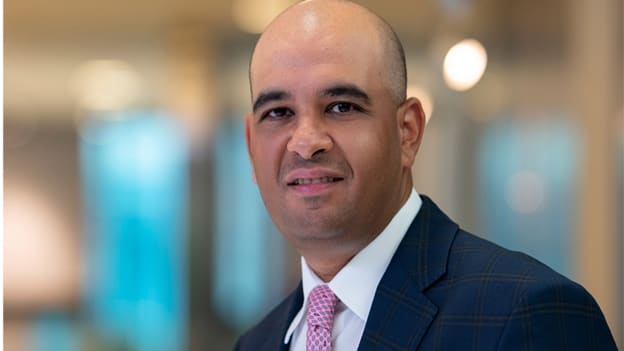Organisations must leverage capabilities and resources through partnerships & collaborations to win the war for talent: EY’s Samir Bedi

READ the September 2021 issue of our magazine: The Great War For Talent
Samir is EY Asean Workforce Advisory Leader, with extensive consulting experience in helping organisations to develop business strategies linked to people-organisation dynamics across Southeast Asia. He has worked on numerous competency, performance and rewards design and implementation projects for public-, private- and third-sector clients.
His experience covers all aspects of human resources consulting, ranging from organisation structuring and manpower planning to job redesign and the future of work. Other areas include creating differentiated reward programs, developing a high-performance culture, integration of performance and reward and talent programs, as well as HR process review and audit.
Here are the excerpts of the interview.
What’s your take on what some economists have dubbed as 'Great Resignation'? Given the pace of mass exodus, do you think CEOs and top leaders should change their mindset to realign their vision around talent management?
With economists projecting signs of recovery across the globe, organisations are keen to drive growth and seize opportunities. To compete successfully in the new economy and landscape, organisations are reframing their business strategies and realigning their workforce policies to meet their new business needs.
To keep up with the changing professional world, it is necessary to have the right people, with the right skills, and at the right places. This raises the question: Whether you buy the talent you need, or you build or borrow it?
Organisations will need to plan differentiated strategies depending on the market availability of required skills. In a tight labor market like that of Singapore, talent with in-demand digital skills are highly valued and sought after. The loop on talent regeneration has almost been closed pertaining to the ongoing border restrictions creating inbound talent scarcity issues.
Therefore, organisations must find other ways to bridge the skills gap, through upskilling and reskilling the existing talent. Building a learning culture with opportunities for continually upskilling will also help to boost the employer’s attractiveness given that lifelong employability and future relevance is a key concern for the employees in the long run.
MORE FOR YOU...
- Walmart's Amy Goldfinger on winning the talent war
- IBM's HR chief Nickle LaMoreaux on the new world of work
- Dr Tomas Chamorro-Premuzic on the war for talent
- CIPD's Peter Cheese on capability building
Organisations must also break-free from a silo mindset and go beyond their own efforts to buy or build capabilities. Instead, they will need to intentionally consider how to best tap on existing ecosystems to leverage capabilities and resources through partnerships and collaborations.
What can business leaders do to ensure that their recruiting processes, overall strategies, and their employee value proposition, can attract and retain the best possible talent amid this crisis? What could be the big differentiators for companies to win the talent war?
Beyond adopting a skills-based approach to talent management and investing resources to set up structures, tools and policies that support lifelong learning, business leaders will need to evolve their relationship with their employees from a transactional to people-centric model.
There is a growing appreciation of the importance of mental health and well-being, which have been thrown in the spotlight by the discussions around safe workplace practices and reports of employee burnouts amid the COVID-10 crisis. As flexible work arrangements are becoming the norm in a post-COVID-19 normal, employees are increasingly looking for organisations that prioritize health and wellness through the provision of tools that support collaboration and effective remote working arrangements, as well as organisations that deliver engaging employee experiences. According to the EY 2021 Work Reimagined Employee Survey that canvassed the views of employees globally, including 1,037 respondents across Southeast Asia (Singapore, Malaysia, Indonesia and Philippines), organisations are already transforming their workplace practices such as establishing meeting and email-free times (49% of respondents) and instituting clear working hours for work-life balance (44% of respondents).
As the future workplace could be any location, the challenges to develop a sense of belonging will increase. That is where CEOs play a critical role in galvanizing employees around their purpose and embedding purpose-driven objectives across the business.
How can employers grab this opportunity to plan for the long term?
Organisations that survived the disruptions caused by COVID-19, demonstrated agility and rapidness in decision-making. As industry boundaries continue to be redefined and with business models still in flux, organisations need to shorten their planning cycles and embed flexibility in their approach. Leaders will need to embrace a fundamental mindset shift and reorient their organisations to embrace continuous transformations in order to generate sustainable growth and deliver long-term value.
Even as leaders work on adopting a continuous transformation mindset, their transformation trajectory must have purpose as a central guide. As organisations explore the future and work backwards to review their relevance, they must stay centered on their purpose.
For example, today companies are planning their learning and development initiatives. Whereas, earlier, organisations used to rely on past budgets and iterate from past initiatives. Today, organisations with future plans begin the exercise by first identifying the future skills needed by their organisation, current and future salary premiums required, and assessing the investments required in learning and development to bridge these skill gaps. This future-back approach ensures that organisations are spending the critical amount of budget to meet their goals.
Can corporations leapfrog legacy practices and build new approaches that enable highly qualified women to succeed in these dynamic markets?
Organisations that thrived as digital disruptors during the COVID-19 pandemic proved that transformation is not limited to organic evolution. In fact, the greater the disruption in the environment, the more significant the opportunity to leapfrog. This requires an open and innovative mindset that is best nurtured in a diverse and inclusive workplace, which means that organisations need women in the workplace more than ever.
COVID-19 has created both challenges and opportunities for building a more equitable workplace. On one hand, the normalisation of remote working and an outcome-focused approach to talent management has allowed companies to reach out to different work profiles and hire from otherwise, untapped labor pools such as ‘stay-at-home moms’ who prefer part-time work engagements. On the other hand, women in the workforce have also quit jobs to serve the caregiving obligations or were made redundant as companies hit hard by the pandemic closed.
Organisations need to focus on three key areas to build more equitable workplaces. Firstly, they need to extend access to affordable and high-quality childcare. Secondly, they must create a workplace and an economy that acknowledges the demands of caregiving. Thirdly, they must provide return-to-work policies that create a glide path to return for people who have been out of the labor force for a while.














